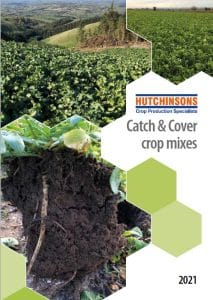Delving beneath the surface of vineyard success – Vineyard – Ed Brown
Any vineyard needs healthy soil to support productive, uniform vines, but what constitutes “healthy soil” and how do you measure it? Hutchinsons bioagriecologist Ed Brown explains ...
Soil is made up of physical, biological and chemical properties. The status of each of these components and the interactions between them is what determines whether soil is “healthy” or not.
Physical properties, such as texture (measured by the proportion of sand, silt and clay particles) and organic matter content for example, help determine soil structure and affect the movement of air, water and roots through the soil, plus its ability to retain nutrients and support soil biology.
Chemical and biological components, including pH, microbial activity and the amount of “active carbon” (carbon readily available as food for microbes), are also heavily interlinked and greatly influence organic matter breakdown, natural structuring and nutrient availability.
With such an array of interdependent factors to consider, soil health can be hard to quantify. Simple indicators, such as earthworm activity, standard soil tests, identifying drainage problems or variations in crop/root growth offer a useful starting point but a detailed soil assessment adds far greater precision providing a baseline soil status to work from and measure results against.
Healthy Soils audits at vineyards
Hutchinsons has conducted Healthy Soils audits at several vineyards, often with different business approaches, but sharing a common interest in sustainable soil management.
Two recent examples include Pattingham Vineyard, a conventional vineyard on lighter soil in Shropshire, and Hamstreet Wines in Kent, a heavier soil type, converting to organic, with a big focus on biodynamic, regenerative production.
Both want to establish a baseline of current soil health, from which future management can be planned to help optimise vineyard productivity.
The Healthy Soils assessment incorporates several key tasks
Assess soil texture and identify variations across the site, using the UK Soil Observatory website, to highlight individual soil zones
Take soil core samples from each zone at 15cm and 30cm deep, which are sent for comprehensive lab analysis of physical, chemical and biological properties, including:
- Macro nutrients split into total and available (kg/ha), and trace elements in mg/l. (Index figures for P, K and Mg are also given for reference)
- Organic matter and active carbon
- pH and buffer pH
- Bulk density
- Cation Exchange Capacity
- Biological properties (e.g. C:N ratio, microbial biomass)
Conduct a water infiltration test
A Visual Evaluation of Soil Structure (VESS test)
Assess key organisms and earthworms
Pattingham Vineyard audit
The audit at Pattingham Vineyard found that while soil was in generally good condition, the light, sandy texture inherently meant extra focus was needed on improving nutrient retention, possibly using inter-row cover crops and mulches.
This will be supported with Novacrop sap analysis through the season to check nutrient levels and address any potential deficiencies.
Hamstreet Wines audit
Conversely, the focus at Hamstreet Wines is on improving structure to aid natural drainage and ensuring nutrients held within the soil get into the crop when needed via a healthy root system.
The team at this site is already trying inter-row cover cropping with an organic herbal ley mix to build root diversity, add organic matter, suppress weeds and build mycorrhizal activity in the soil.
The team is also looking at making compost using the increasingly popular Johnson–Su Composting Bioreactor, providing a source of organic matter and beneficial bacteria and fungi.
What is the benefit of good soil health?
As US regenerative farming consultant John Kempf’s “plant health pyramid” suggests, improving the many different “layers” of soil health can ultimately boost a plant’s immunity to soil and airborne pathogens, give more resistance to insects and improve fruit quality, so should be a win-win.
When is a good time for a soil assessment?
Soils assessments are generally best done when soil is moist, not saturated, and warm enough for biology to be active, so spring is an ideal time.
Once a baseline has been established and a management strategy put in place regular monitoring is essential. That should include frequent test digs throughout the year to check what’s going on beneath the surface, as well as annual infiltration tests and worm counts, supported by more detailed soil testing every three years.

MaxiFruit: Cover crop mix
Launched this year, MaxiFruit is a Hutchinsons cover crop mix suitable for vineyards. Download the booklet for more information...
Download (1778 kb)